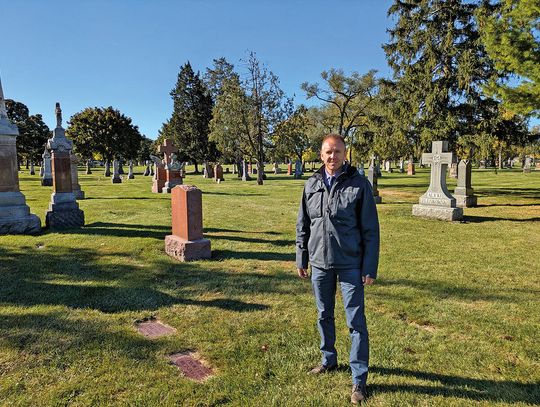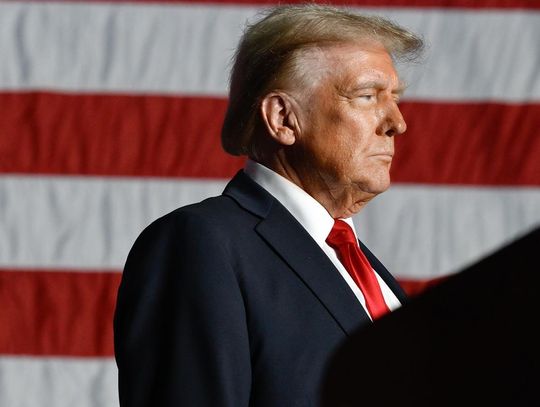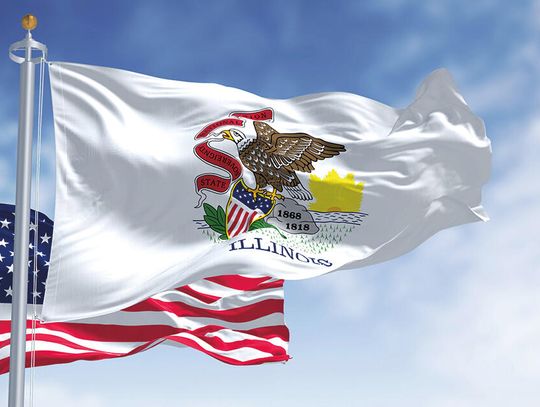3 listopada 2020 r. w Stanach Zjednoczonych odbędą się kolejne wybory prezydenckie. Amerykanie zdecydują w nich kto zostanie następnym prezydentem USA na najbliższe cztery lata. W szranki stają: kandydat Partii Republikańskiej, urzędujący prezydent – Donald Trump oraz były wiceprezydent z czasów prezydentury Baracka Obamy, demokrata – Joe Biden. Ostatnie wrześniowe sondaże wskazują na minimalną przewagę Bidena, ale obecny prezydent zdaje się stopniowo odrabiać straty. W listopadzie czeka nas zacięta walka o fotel prezydenta USA, warto więc zastanowić się jak wygląda obecna amerykańska kampania wyborcza, specyficzny i pośredni system wyborczy (prezydenta de facto wybiera kolegium elektorskie) oraz co oznacza dla nas wybór danego kandydata – ciągłość czy zmianę polityki amerykańskiej? Historyk amerykański, profesor Allan J. Lichtman, stworzył na początku lat 80. XX wieku model 13 punktów (kategorii), z czego tylko dwa związane są bezpośrednio z cechami personalnymi kandydatów na urząd, a których spełnienie prowadzi do zdobycia stanowiska prezydenta Stanów Zjednoczonych (m.in. sytuacja gospodarcza, sukcesy w polityce międzynarodowej, nastroje społeczne, czy wyniki ostatnich wyborów do Kongresu – midterms). Model ten, oparty na fizycznej analizie sejsmograficznej oraz statystyce, opisał w książce ,,The Keys to the White House”, wydanej w 1996 r. Dzięki tej metodzie prognozowania udaje mu się trafnie przewidywać wyniki wyborów od czasów prezydentury Ronalda Reagana. Jako ciekawostka, prof. Lichtman, jako jeden z nielicznych przewidział w 2016 r. zwycięstwo obecnego prezydenta USA, Donalda Trumpa, mimo pierwotnej przewagi w sondażach demokratki, Hillary Clinton. Po zakończonej kampanii profesor otrzymał od prezydenta Trumpa list gratulacyjny. Ale w obecnej kampanii Lichtman wskazuje jednak na zwycięstwo Joe Bidena (7 do 6 na 13 punktów), jednak do końca kampanii jeszcze około miesiąc i wszystko się może zmienić (predykcje na korzyść Trumpa, Lichtman zmienił jesienią 2016 r. na kilka dni przed dniem wyborów). Obecne sondaże ogólnoamerykańskie (sondaż CNN Politics z 2 września) dają Bidenowi nieznaczną przewagę: 51% do 43%. Podobnie było w 2016 r., kiedy to Donald Trump początkowo miał stratę sondażową do Hillary Clinton, jednak ostatecznie to on – używając nomenklatury prof. Lichtmana – znalazł „klucz do Białego Domu”. O jednej rzeczy prof. Lichtman nie mówi w swoim modelu, ale z politologiczno-prawnego aspektu tzw. geografii wyborczej jest to jednak kluczowe. Formalnie – zgodnie z amerykańskim prawem, wyboru prezydenta dokonuje Kolegium Elektorów, umocowany konstytucyjnie i powołany specjalnie w tym celu organ. Jednak w praktyce głosowanie elektorów ma charakter raczej symboliczny. Liczba głosów elektorskich przypadających poszczególnym stanom odgrywa kluczową rolę w strategii prezydenckich kampanii wyborczych w Stanach Zjednoczonych, a wynik wyborów zależy w praktyce od wyniku głosowania w kilku swing states. W nadchodzących wyborach będzie ich prawdopodobnie osiem: Michigan, Wisconsin, Pensylwania, Karolina Północna, Arizona, Floryda, Georgia i tradycyjnie Ohio. Zadaniem kandydatów jest przejęcie jak największej liczby stanów „wahających się”. Od tego może zależeć listopadowe zwycięstwo któregoś z nich. W 2016 r. Donaldowi Trumpowi się to udało (przejął większość istotnych swing states – w tym Ohio, Pensylwanię, Arizonę, Karolinę Północną, Florydę, Michigan, Georgię, Wisconsin). W tym roku będzie to znacznie trudniejsze dla obecnego prezydenta (musi mieć znów Florydę oraz koniecznie utrzymać Teksas, który idzie w stronę swing state – jest tzw. leaning republican – stan ze słabnącą przewagą jednej z partii, w tym wypadku republikańskiej), choć nie jest to wykluczone, aczkolwiek eksperci w tym roku twierdzą, że to Biden ma szanse na zdobycie większej ilości swing states (jeśli wśród nich będzie mająca 29 głosów elektorskich Floryda, a Trump przegrałby w Teksasie – 38 głosów, to tak naprawdę wygrana w pozostałych „wahających się” stanach niewielu by mu dała, odwrotnie niż w poprzednich wyborach). Na początku września faworytem (na pewno nie murowanym) jest wciąż jednak Biden. W kampanii na tym etapie ważni są także współpracownicy kandydatów, w tym przede wszystkim oficjalni kandydaci na wiceprezydentów USA, oficjalnie nominowani przez dwie największe partie. O ile naturalnym kandydatem dla Donalda Trumpa jest obecny wiceprezydent, Mike Pence, o tyle nominacja senator i byłej prokurator z Kalifornii, Kamali Harris przez Partię Demokratyczną miała dać dużo nowej energii Bidenowi. To też ukłon dla lewicowo-progresywnego elektoratu demokratów (szczególnie tych, którzy bardziej chcieli nominacji Berniego Sandersa) oraz próba zagregowania poparcia dla antytrumpowego ruchu „Black Lives Matter” (powstałego nieformalnie jako efekt masowych protestów w USA po śmierci czarnoskórego obywatela, Georga Floyda, spowodowanej prawdopodobnie brutalną interwencją policji w maju 2020 r.). Sprawa została dość mocno upolityczniona, z jednej strony Donald Trump popierał działania policji, domagał się delegalizacji lewicowej Antify, a także nazwał ruch „Black Lives Matter” ruchem neomarksistowskim, natomiast Joe Biden łączył się online podczas pogrzebu Floyda w Houston w czerwcu oraz zapewniał, że jeśli on wygra, policja nie będzie przekraczać swoich uprawnień, czyli w pewnym sensie grał także politycznie tą kartą. To wydarzenie dobitnie pokazuje, jak takie kontrowersyjne wydarzenia mogą upolityczniać amerykańską opinię publiczną. Warto też dodać, że drugim mocnym tematem kampanii jest pandemia COVID-19. Joe Biden wskazuje, że Donald Trump nie radził sobie z nią. Natomiast Trump kontratakuje, że on walczy o amerykańską gospodarkę i miejsca pracy, a wybór Bidena to neomarksistowski „koniec American Dream”. Te tematy są przedmiotem trzech debat pomiędzy kandydatami. Pierwsza z nich odbyła się 29 września w Clevelend w stanie Ohio, a kolejne dwie będą miały miejsce w październiku. Debaty telewizyjne plus dobre wieści z gospodarki to, przy dobrym przygotowaniu obecnego prezydenta, jego wielka szansa na dogonienie rywala i reelekcję. Natomiast Joe Biden prawdopodobnie skupi się na krytyce obecnej polityki administracji Trumpa i przekonaniu Amerykanów, że on lepiej poradzi sobie z drugą falą pandemii koronawirusa. Zwycięzcę trudno jednak jednoznacznie wskazać na tym etapie kampanii, ale na ten moment o krok bliżej do upragnionej prezydentury jest były wiceprezydent w administracji Baracka Obamy. Czy to oznacza powrót do jego polityki z lat 2008-2016 – nie wiadomo. Z kolei urzędujący prezydent, który jako businessman walczy do końca, na pewno tak łatwo się nie podda. Jedno na 100% wiadomo – najbliższe dwa miesiące będą arcyciekawą rozgrywką polityczną o najbardziej pożądane miejsce w Ameryce – Biały Dom. Dr Szymon Bachrynowski politolog i europeista. Ukończył studia na Uniwersytecie Warszawskim. Doktorat obronił na Uniwersytecie Marii Curie Skłodowskiej w Lublinie. Jest adiunktem w Papieskim Wydziale Teologicznym w Warszawie „Collegium Bobolanum”. Członek Polskiego Towarzystwa Studiów Międzynarodowych. Specjalizuje się w analizie polityk publicznych, geopolityce i współczesnej myśli politycznej. Opublikował monografie na temat myśli politycznej irlandzkiego ruchu republikańskiego (2009) oraz systemu partyjnego Kraju Basków (2011), był współredaktorem książki na temat kryzysu we współczesnej polityce (2010) oraz autorem kilkudziesięciu innych publikacji naukowych, popularyzatorskich i eksperckich.
UWAGA ,,Dziennik Związkowy” nie jest odpowiedzialny za treść materiałów udostępnianych przez The Warsaw Institute Foundation. Materiały ukazują się w formie przesłanej do redakcji.
The Warsaw Institute Foundation to pierwszy polski geopolityczny think tank w Stanach Zjednoczonych. Strategicznym celem tej organizacji jest wzmocnienie polskich interesów w USA przy jednoczesnym wspieraniu unikalnego sojuszu między dwoma narodami. Jej działalność koncentruje się na takich zagadnieniach jak geopolityka, porządek międzynarodowy, polityka historyczna, energetyka i bezpieczeństwo militarne. The Warsaw Institute Foundation została założona w 2018 roku i jest niezależną organizacją non-profit, inspirowaną bliźniaczą organizacją działającą w Polsce – Warsaw Institute. The Warsaw Institute Foundation is Poland's first geopolitical think tank in the United States. The strategic goal of this organisation is to bolster Polish interests in the U.S. while supporting the unique alliance between the two nations. Its activity focuses on such issues as geopolitics, international order, historical policy, energy, and military security. Established in 2018, The Warsaw Institute Foundation is an independent, non-profit organization inspired the twin Poland-based Warsaw Institute.











